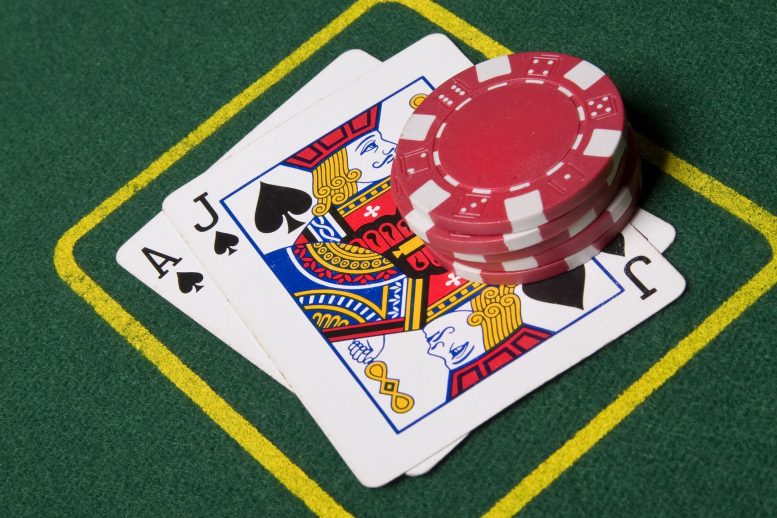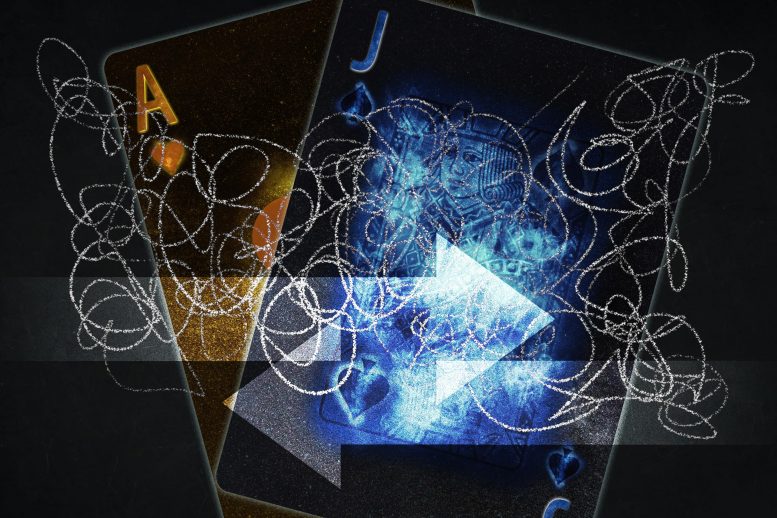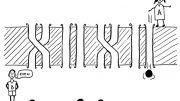
MIT and Caltech researchers have found that the quantum effects of entanglement could give blackjack players a small edge when playing against the house.
Can a Quantum Strategy Help Bring Down the House?
In some versions of the game blackjack, one way to win against the house is for players at the table to work as a team to keep track of and covertly communicate amongst each other the cards they have been dealt. With that knowledge, they can then estimate the cards still in the deck, and those most likely to be dealt out next, all to help each player decide how to place their bets, and as a team, gain an advantage over the dealer.
This calculating strategy, known as card-counting, was made famous by the MIT Blackjack Team, a group of students from MIT, Harvard University, and Caltech, who for several decades starting in 1979, optimized card-counting and other techniques to successfully beat casinos at blackjack around the world — a story that later inspired the book “Bringing Down the House.”
Now researchers at MIT and Caltech have shown that the weird, quantum effects of entanglement could theoretically give blackjack players even more of an edge, albeit a small one, when playing against the house.

Can a quantum strategy help bring down the house? MIT study finds quantum entanglement gives slight advantage in playing against the house. Credit: Christine Daniloff, MIT
In a paper published this week in the journal Physical Review A, the researchers lay out a theoretical scenario in which two players, playing cooperatively against the dealer, can better coordinate their strategies using a quantumly entangled pair of systems. Such systems exist now in the laboratory, although not in forms convenient for any practical use in casinos. In their study, the authors nevertheless explore the theoretical possibilities for how a quantum system might influence outcomes in blackjack.
They found that such quantum communication would give the players a slight advantage compared to classical card-counting strategies, though in limited situations where the number of cards left in the dealer’s deck is low.
“It’s pretty small in terms of the actual magnitude of the expected quantum advantage,” says first author Joseph Lin, a former graduate student at MIT. “But if you imagine the players are extremely rich, and the deck is really low in number, so that every card counts, these small advantages can be big. The exciting result is that there’s some advantage to quantum communication, regardless of how small it is.”
Lin’s MIT co-authors on the paper are professor of physics Joseph Formaggio, associate professor of physics Aram Harrow, and Anand Natarajan of Caltech, who will start at MIT in September as assistant professor of electrical engineering and computer science.
Quantum dealings
Entanglement is a phenomenon described by the rules of quantum mechanics, which states that two physically separate objects can be “entangled,” or correlated with each other, in such a way that the correlations between them are stronger than what would be predicted by the classical laws of physics and probability.
In 1964, physicist John Bell proved mathematically that quantum entanglement could exist, and also devised a test — known the Bell test — that scientists have since applied to many scenarios to ascertain if certain spatially remote particles or systems behave according to classical, real-world physics, or whether they may exhibit some quantum, entangled states.
“One motivation for this work was as a concrete realization of the Bell test,” says Harrow of the team’s new paper. “People wrote the rules of blackjack not thinking of entanglement. But the players are dealt cards, and there are some correlations between the cards they get. So does entanglement work here? The answer to the question was not obvious going into it.”
After casually entertaining the idea during a regular poker night with friends, Formaggio decided to explore the possibility of quantum blackjack more formally with his MIT colleagues.
“I was grateful to them for not laughing and closing the door on me when I brought up the idea,” Formaggio recalls.
Correlated cards
In blackjack, the dealer deals herself and each player a face-up card that is public to all, and a face-down card. With this information, each player decides whether to “hit,” and be dealt another card, or “stand,” and stay with the cards they have. The goal after one round is to have a hand with a total that is closer to 21, without going over, than the dealer and the other players at the table.
In their paper, the researchers simulated a simple blackjack setup involving two players, Alice and Bob, playing cooperatively against the dealer. They programmed Alice to consistently bet low, with the main objective of helping Bob, who could hit or stand based on any information he gained from Alice.
The researchers considered how three different scenarios might help the players win over the dealer: a classical card-counting scenario without communication; a best-case scenario in which Alice simply shows Bob her face-down card, demonstrating the best that a team can do in playing against the dealer; and lastly, a quantum entanglement scenario.
In the quantum scenario, the researchers formulated a mathematical model to represent a quantum system, which can be thought of abstractedly as a box with many “buttons,” or measurement choices, that is shared between Alice and Bob.
For instance, if Alice’s face-down card is a 5, she can push a particular button on the quantum box and use its output to inform her usual choice of whether to hit or stand. Bob, in turn, looks at his face-down card when deciding which button to push on his quantum box, as well as whether to use the box at all. In the cases where Bob uses his quantum box, he can combine its output with his observation of Alice’s strategy to decide his own move. This extra information — not exactly the value of Alice’s card, but more information than a random guess — can help Bob decide whether to hit or stand.
The researchers ran all three scenarios, with many combinations of cards between each player and the dealer, and with increasing number of cards left in the dealer’s deck, to see how often Alice and Bob could win against the dealer.
After running thousands of rounds for each of the three scenarios, they found that the players had a slight advantage over the dealer in the quantum entanglement scenario, compared with the classical card-counting strategy, though only when a handful of cards were left in the dealer’s deck.
“As you increase the deck and therefore increase all the possibilities of different cards coming to you, the fact that you know a little bit more through this quantum process actually gets diluted,” Formaggio explains.
Nevertheless, Harrow notes that “it was surprising that these problems even matched, that it even made sense to consider entangled strategy in blackjack.”
Do these results mean that future blackjack teams might use quantum strategies to their advantage?
“It would require a very large investor, and my guess is, carrying a quantum computer in your backpack will probably tip the house,” Formaggio says. “We think casinos are safe right now from this particular threat.”
Reference: “Quantum blackjack: Advantages offered by quantum strategies in communication-limited games” by Joseph X. Lin, Joseph A. Formaggio, Aram W. Harrow and Anand V. Natarajan, 28 July 2020, Physical Review A.
DOI: 10.1103/PhysRevA.102.012425
This research was funded, in part, by the National Science Foundation, the Army Research Office, the U.S. Department of Energy, and the MIT Undergraduate Research Opportunities Program (UROP).









Be the first to comment on "Quantum Blackjack: Using Quantum Entanglement to Gain an Advantage in the Game of Blackjack"